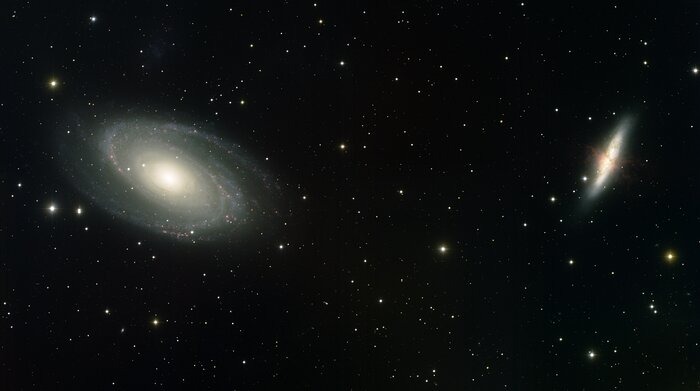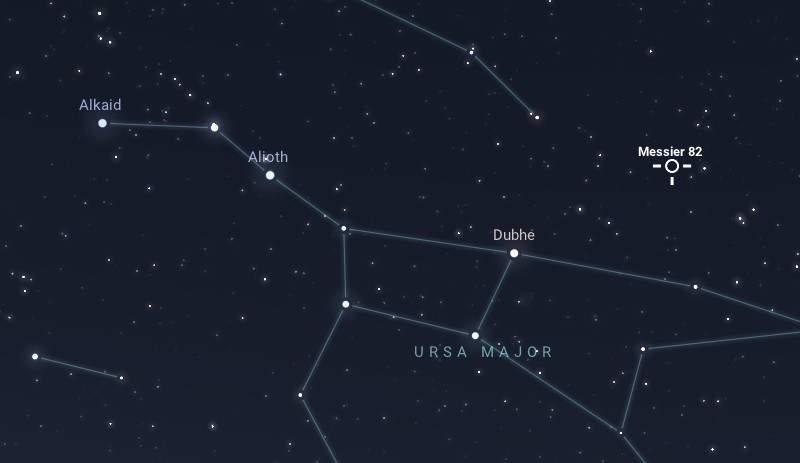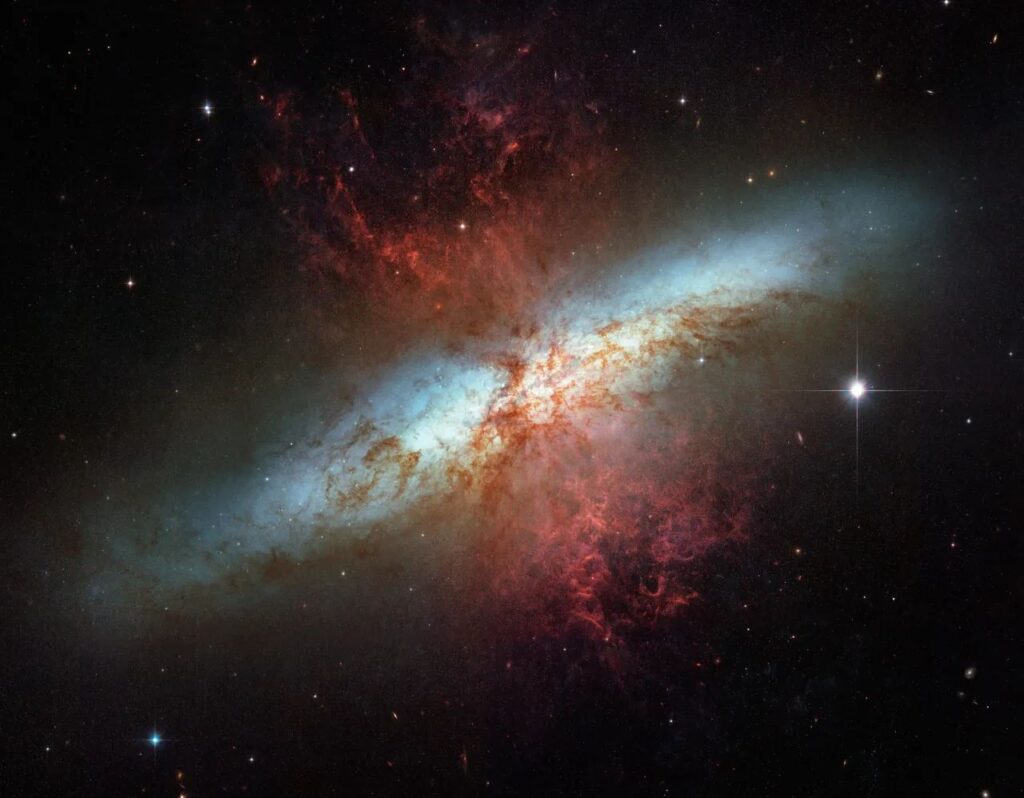M82, also known as the Cigar Galaxy or NGC 3034, is a remarkable irregular galaxy located in the constellation Ursa Major in the northern hemisphere. Here’s some interesting facts about the galaxy:
Basic Characteristics
M82 is classified as an irregular galaxy, although its appearance is often described as “edge-on,” resembling a cigar or spindle. It is situated approximately 12 million light-years away from Earth and spans a diameter of 37,000 light-years.
Structure and Composition
M82 exhibits a distorted shape due to gravitational interactions with its larger neighbor, the spiral galaxy M81 (Bode’s Galaxy). These interactions have caused tidal forces to deform M82’s structure. It is undergoing a massive burst of star formation, fueled by M81 and possibly other nearby galaxies. This starburst activity is evident in its irregular shape and numerous star-forming regions along the edges.
The galaxy contains significant amounts of dust and gas, which are essential for the formation of new stars. Dark lanes of dust can be observed crisscrossing the galaxy’s disk, obscuring some regions from view.
The turbulent environment of M82 has led to frequent supernova explosions. These explosions inject energy and material into the interstellar medium, influencing the galaxy’s evolution.

Observational History
M82 was discovered by the German astronomer Johann Elert Bode on December 31, 1774. It was independently rediscovered by Charles Messier on January 31, 1781.
The Cigar galaxy has been extensively observed across various wavelengths, revealing its turbulent structure, intense star formation, and interactions with neighbouring galaxies. It has provided valuable insights into the processes driving intense star formation, and galactic mergers and interactions.
Observing M82
M82 is visible with small to medium-sized telescopes under dark sky conditions. It appears as a faint elongated patch of light, particularly when observed edge-on. It can be seen with its companion galaxy M81 which appears as a small oval fuzz. M82 can also be seen in 50mm binoculars as a faint streak.
The best time to observe the galaxy is during the spring months, from March to May, when the constellation Ursa Major is well-positioned in the night sky. The galaxy can be found 10 degrees northeast of the star Dubhe, which is one of the stars forming the front side of Big Dipper’s bowl.




